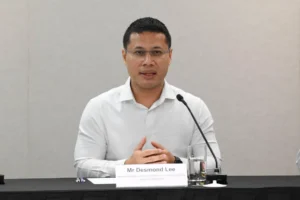Singapore Education System From Primary to University
Share
Singapore education system is divided into three categories which include; Primary education, Secondary Education and Post-secondary education.
Students are enrolled to courses within their level of ability to bring out the best from the learner after school.
Primary Education
This is the basic educational foundation of students where students are enrolled for a compulsory of six years duration.
At this level, the learner is introduced to numeracy skills, building character, sound values and good moral habits.
English Language, Mathematics, and Mother Tongue Language are core subjects in this level to help the learner with problem-solving skills.
However, students also take subjects like Art, Music, Character and Citizenship Education, Social Studies, and Physical Education. Science is introduced from Primary 3.
In primary 5 and 6, students can take English Language, Mathematics, Mother Tongue Language, and Science at either the foundation or standard level.
During the completion of Primary 6, students will sit for the Primary School Leaving Examination (PSLE).
After PSLE, they are placed in secondary school courses that suit their academic learning and aptitude.
Students with talents like art and sports are admitted to secondary school through the Direct School Admission exercise program.
Meanwhile, the Gifted Education Programme (GEP) caters to the educational needs of intellectually gifted students.
Secondary Education
In secondary school, Singapore has designed three courses to match students’ academic progress and interests.
Express Course.
This is a four-year course leading to the Singapore-Cambridge General Certificate of Education (GCE) O-Level exam. Students learn English and a Mother Tongue Language1, as well as Mathematics, the Sciences, and the Humanities.
Normal (Academic) [N(A)] Course.
This is a four-year course with an academically based curriculum leading to the GCE N(A)-Level exam.
Here, students learn subjects similar to those offered in the Express course.
Learners who excel at the N(A)-Level will qualify to progress to Secondary 5 to prepare for the O-Level exam.
Selected students may sit for the O-Level exam in some subjects at Secondary 4, or bypass the N(A)-Level exam and progress directly to Secondary 5 to take the O-Level exam under the N(A) Through Train programme.
However, from 2013, as alternatives to Secondary 5, students who do well at the N(A)-Level have two “through-train” pathways to the polytechnics
(i) a one-year Polytechnic Foundation Program (PFP)
(ii) a two-year Direct-Entry-Scheme to Polytechnic Programme (DPP) via Higher Nitec course at the Institute of
Technical Education (ITE).
Normal (Technical) [N(T)] Course.
It is also a four-year course leading to the GCE N(T)-Level exam.
At this level, students learn English and a Mother Tongue Language, Mathematics, and subjects with technical or practical emphases to enhance learning.
There are also opportunities for lateral transfers mid-stream that based on Subject-Based Banding (Secondary).
Also Read: Education Ministry to Deploy Drones for Exam Deliveries
Schools in Singapore that Offers Unique Needs of Students
Specialised Schools
Specialised Schools for Normal (Technical) Students.
Specialised Independent Schools
Post-Secondary Education
At this stage, almost all students in secondary 4 or 5 proceed to Post-secondary institutions.
- Junior Colleges / Centralised Institute.
Students can apply for pre-university education at the junior colleges (two-year course) or centralised institute (three-year course) leading to the GCE A-Level examinations or the International Singapore Sports School / School of the Arts, Singapore (SOTA).
Students who are talented and have strong interests in sports and arts can apply for a specialised education leading to the International Baccalaureate diploma at both schools, or a Diploma in Business Studies at the Singapore Sports School.
- Polytechnics.
Learners interested in pursuing more practical courses may apply for full-time diploma courses at the polytechnics.
- Institute of Technical Education (ITE)
This level requires students who are willing to pursue technical or vocational training.
Arts Institutions.
Students interested in creative arts at the tertiary level can enroll in programmes.
Also Read: 14 Surprising Things You May Not Know About Singapore
Universities
Universities equip students with knowledge to thrive professionally and contribute to the research and innovation ecosystem.
Singapore has six publicly-funded Autonomous Universities (AUs) that provide a wide range of academic, research, and work-learn among others.
These universities are categorized into two;
• Research-intensive universities that are more academic in nature
• Applied-degree pathway, where students receive more hands-on experience and industry exposure as part of their university education.
List of Six Universities
National University of Singapore (NUS)
Nanyang Technological University (NTU)
Singapore Management University (SMU)
Singapore University of Technology and Design (SUTD)
Singapore Institute of Technology (SIT)
Singapore University of Social Sciences (SUSS)
Follow our WhatsApp Channel and WhatsApp Community for instant news updates

Minister of Education of Singapore Desmond Lee speaking at previous event PHOTO/CNBC
You Might also Like











